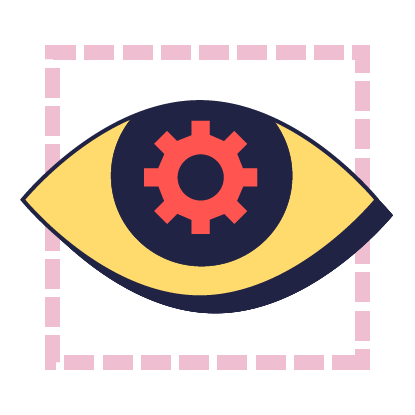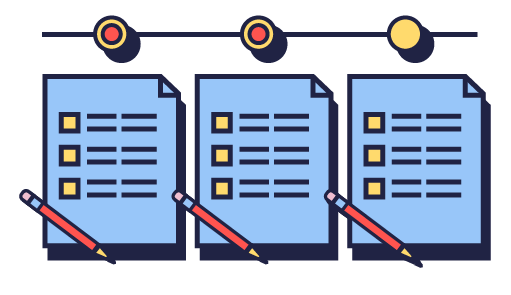How To Design Competency-Based Learning Programs
In competency-based learning programs, employee development is targeted to achieve role-specific performance outcomes or competencies. Here are some dos and don’ts to consider when designing your competency-based learning (CBL).

Competency-Based Learning Design Dos

1. Invest Time Upfront In Competency Mapping
In order for a program to be successful, competencies must be clearly defined and mapped to the roles in the organization. Each organization will have its own unique set of roles and associated competencies. Traditionally, these maps are created when top performers are observed and interviewed so that their performance can be captured as a list of core competencies (skills + knowledge + abilities).
The entire learning program will be geared toward achieving these performance objectives, so take the time to map them correctly.
Consider starting small with just one department or set of roles to make the process more manageable, and be prepared to revisit your competency maps periodically to be sure they still reflect your top performance goals.

2. Align Competency Maps With The Latest Business Goals
Imagine that you are implementing a competency-based learning program for the customer service department of a large organization. Based on the latest analytics, the organization has decided to change their service strategy from a central and general approach to a regional, product-specific one. Can you adapt your learning program nimbly to accommodate the change in focus? Are your competency maps in alignment with the newest approach?
Be sure the Learning and Development team is knowledgeable about all decisions that may impact the competency maps and therefore the learning program. In addition to making the learning more effective, it’s easier for the learning team to demonstrate value when they can show the direct link between the competencies being mastered and the latest vision of the organization. It’s also reassuring for learners to know that their learning program is relevant and up to date, designed to support employees in achieving the latest business targets.

3. Take A Blended Approach To The Learning Program
Competency-based learning programs should contain mixed media learning offerings. One of the many advantages of a clear competency map is that the next step on the learning journey is clearly spelled out. Having some online and self-paced resources allows your learners to take the initiative in their personal development and advance the skills they need for their current role or perhaps even prepare for the next one.
Why not have all the learning assets online only? Remember that competencies are not just pieces of knowledge or single skills that might be more easily acquired in an online format. Instead, they are the application of skills, knowledge, and abilities to master a job/role responsibility. For competency-based learning to be effective, the learners must demonstrate that competency. Depending on the behavior in question, this likely involves a face-to-face component—whether formal Instructor-Led Training or a skills demonstration with a supervisor present.
Competency-Based Learning Design Don’ts

1. Focus Only On Skills
A common mistake when designing a competency-based learning program is to focus just on the skills required to do the job. Remember when constructing your map and developing your learning assets to consider the knowledge and abilities. Describe behaviors and their desired outcomes within the context of the business goal. For example, it is not enough to say the learner will be able to use the pivot table function in Excel. Instead, explain that the learner will make recommendations to operations based on pivot table analysis of trends in shipping costs by product.
Not only should your learning assets include all the elements of the competency, but so must your assessment. If you’re teaching an advanced competency, it’s unlikely a multiple-choice online quiz can adequately assess your learners. In addition to such an assessment of knowledge, you will need to create opportunities for learners to demonstrate competency in a safe environment.

2. Let It Stagnate Just Because It’s Hard
In some large organizations with complex job structures, simply documenting competencies can be a Herculean task. By the time they’re all documented, they already need to be updated. Work to keep your map, and therefore your learning program, as simple as possible. Consider having 30 or fewer competencies per role.
Depending on the size and scope of your organization, plan for annual reviews of business goals, jobs/roles, competencies, and learning elements and assessments. It doesn’t take long for the whole program to stagnate under its own weight if it’s too complicated.

3. Assess Only One Time
Mastery doesn’t happen after one learning engagement. It’s helpful to have gradations of competency to help learners progress. At Obsidian Learning, we most often use a scale from awareness (learner has been exposed to the new knowledge/skill) to application (learner can apply the new knowledge/skill) to mastery (learner can apply the new knowledge/skills in advanced or challenging circumstances and even teach others). Having a scale allows learners, even beginners, to stay motivated in their personal development. It also helps manage expectations for role change or career advancement.
As we’ll discuss in the next article in this series, assessors should have a clear set of guidelines for evaluating the performance to help improve consistency and fairness in evaluation.
Designing a competency-based learning program is definitely a challenge. Not many organizations do it well. These dos and don’ts, though not a comprehensive list, will certainly help a program designer hit the mark. Read our next article to learn about measuring the effectiveness of your competency-based learning program. Download the eBook Competency-Based Learning: Increase Employee Skills Development Through Competency-Based Learning to discover more about this highly-strategic approach to employee skills development.









